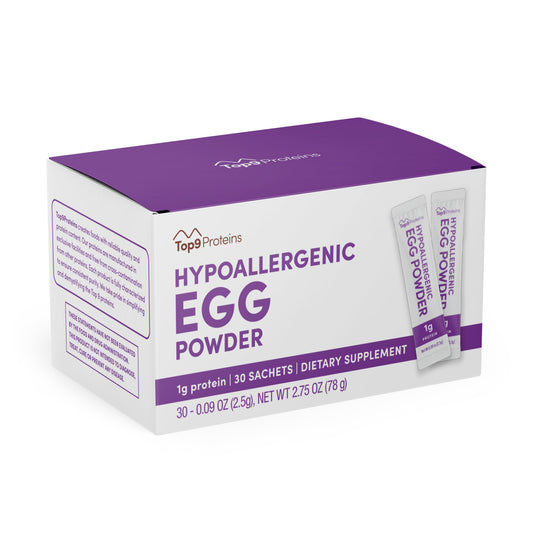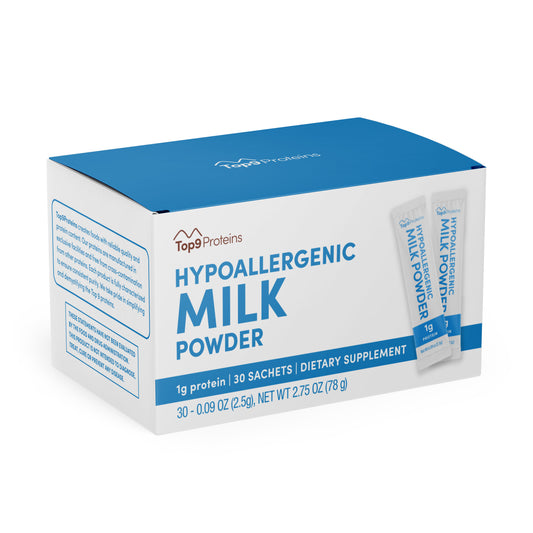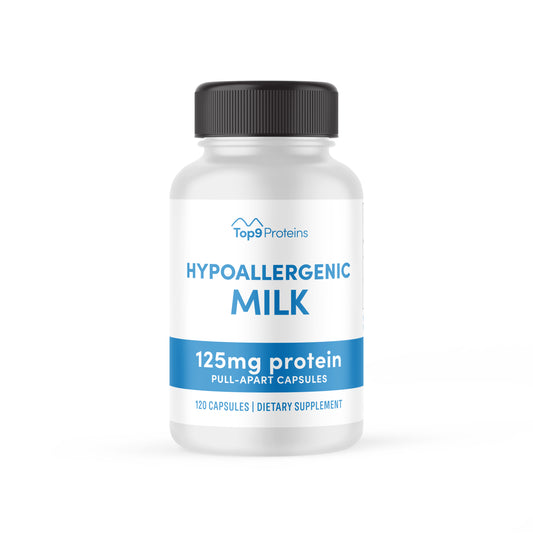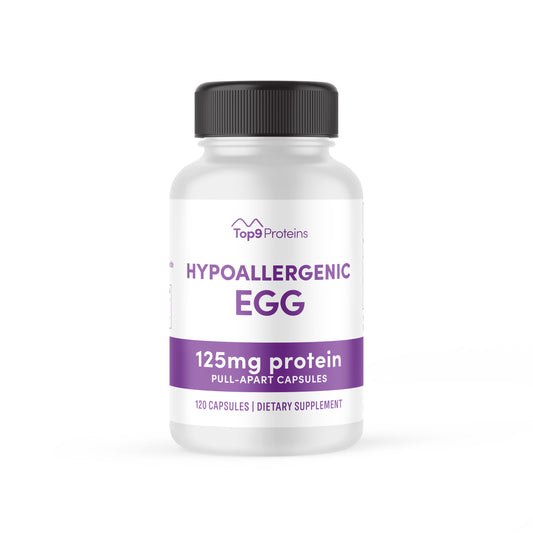Milk and egg allergy are two of the most common food allergies, generally more prevalent than peanut allergy in infants. (Samady, Warren) Strict avoidance of egg and milk is nearly impossible for families given their ubiquity in childhood foods (formula, cheese, cakes, crackers, etc). While more than 50% of infants will outgrow milk and egg allergies by age 16, it is not known which children are more likely to self-resolve their allergies. Perhaps of more importance to families is the missed years of participation in holiday, school, and community celebrations.
Milk and egg proteins have largely conformational IgE-binding epitopes that are susceptible to denaturation with heat. The resulting proteins become hypoallergenic to 73% of milk-allergic and 80% of egg-allergic individuals. (Osborne)
Based on this finding, the last twenty years has seen excitement around:
-
“ladders” where a patient is guided through a structured sequence of less heated milk and egg forms, over time. Patients and doctors may prefer ladders because they rely on foods that can be fairly easily prepared, and all progress happens at home (Mack). On the other hand, the ladder rungs can be vague and confusing to families
-
baked milk and baked egg introduction, where those who can tolerate a full serving of home-made baked goods are encouraged to incorporate baked goods into the daily diet. This one-step process is simple but limited to those who can already tolerate a full serving. It also requires families to bake frequently and often leads to refusal from the child
-
Baked egg or milk oral immunotherapy (BE-OIT, BM-OIT), where specific amounts of baked goods are gradually increased until reaching a target serving. OIT allows for intervention in all children with egg or milk allergy, however the protocols are not standardized and the servings must all be made at home.
All three forms of advancement have advantages and disadvantages, but the data to support the use of ladders and baked good introduction is challenging to interpret because each study is different and the actual dosing followed by patients is variable from patient to patient.
A recent meta-analysis (Anagnostu) looked at five BE-OIT and 5 BM-OIT studies. The combined data showed that desensitization occurred in 74% of patients in BE-OIT studies and 70% of patients in BM-OIT studies. Tolerance occurred in 49% of patients in BE-OIT studies and 29% of patients in BM-OIT studies.
Allergic reactions of any severity were reported in 20% of BE-OIT and 61% of BM-OIT patients. Severe reactions were reported in no BE-OIT and 11% of BM-OIT patients (including a 10% rate of anaphylaxis). There was no epinephrine use in the BE-OIT studies. In BM-OIT studies, there was a 9% rate of total and at-home epinephrine use. EoE was reported in 1 BE-OIT (1 event) study.
The authors created control groups from the placebo arm of 12 egg OIT studies and 13 milk OIT studies This showed meta-analyzed rates for desensitization of 6% (milk) and 9% (egg); tolerance of 21% (milk) and 11% (egg); any adverse reaction rate of 17% (milk) and 9% (egg); no severe adverse reactions, anaphylaxis, or epinephrine use; and for milk, discontinuation rate of 4% and EoE rate of 2%.
This data suggests that while effective, as with all immunotherapy, there is an increased risk of reactions as compared to avoidance. Further, while baked goods are hypoallergenic to 70-80% of individuals, options that were hypoallergenic to ~100% of individuals might offer a safer path to immunotherapy.
-
Anagnostou A, Mack DP, Johannes S, et al. The Safety and Efficacy of Baked Egg and Milk Dietary Advancement Therapy: A Systematic Review and Meta-Analysis. J Allergy Clin Immunol Pract. 2024;12(9):2468-2480. doi:10.1016/j.jaip.2024.06.016
-
Mack DP, Greenhawt M, Anagnostou A. Are there hidden dangers associated with milk and egg dietary advancement therapy? J Allergy Clin Immunol Pract 2023;11:1056-62
-
Osborne NJ, Koplin JJ, Martin PE, Gurrin LC, Lowe AJ, Matheson MC, et al.Prevalence of challenge-proven IgE-mediated food allergy using population- based sampling and predetermined challenge criteria in infants. J Allergy Clin Immun 2011;127:668-676.e1-2.
-
Samady W, Warren C, Wang J, Das R, Gupta RS. Egg Allergy in US Children. J Allergy Clin Immunol Pract. 2020;8(9):3066-3073.e6. doi:10.1016/j.jaip.2020.04.058
-
Warren CM, Agrawal A, Gandhi D, Gupta RS. The US population-level burden of cow's milk allergy. World Allergy Organ J. 2022;15(4):100644. Published 2022 Apr 21. doi:10.1016/j.waojou.2022.100644




